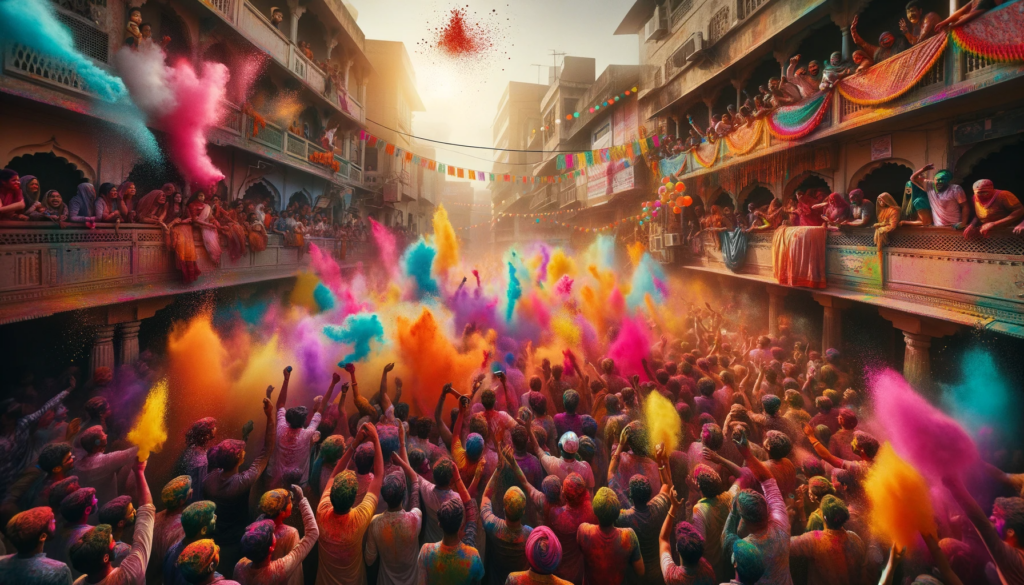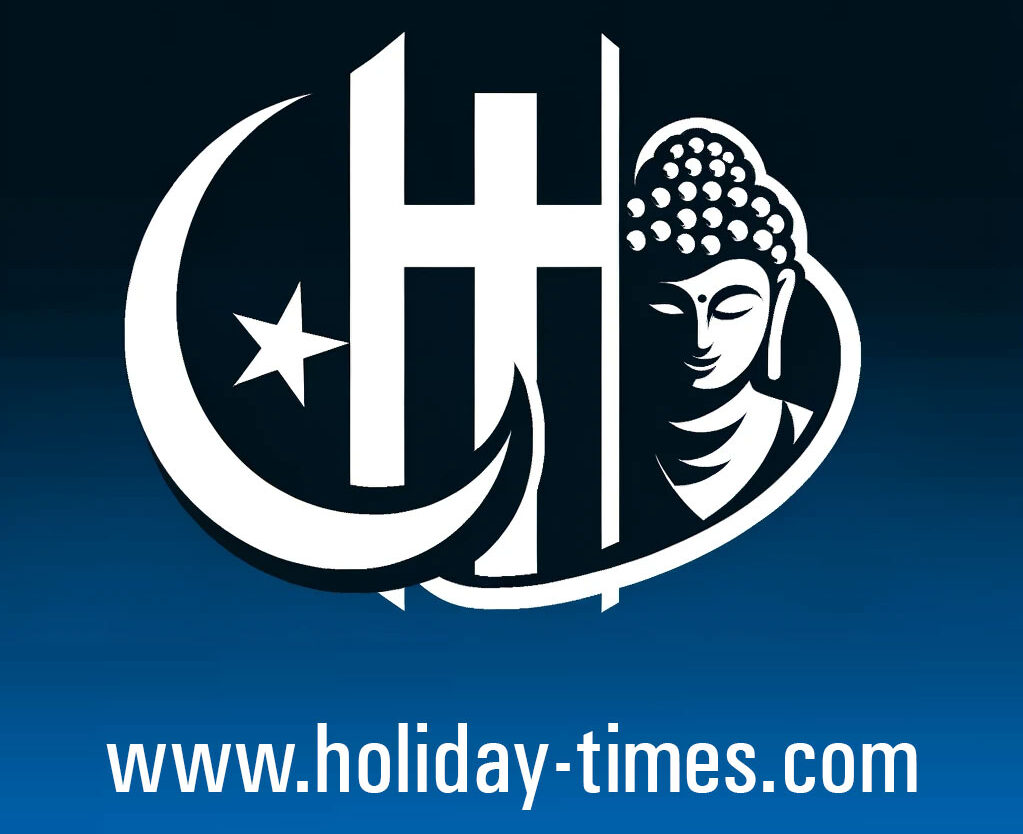Asia, with its diverse cultures and rich history, celebrates a multitude of vibrant public holidays throughout the year. These holidays often feature unique customs, traditional performances, and communal festivities that showcase the region’s cultural heritage. Here’s a look at some of the most colorful public holidays in Asia.
Diwali (India)
Date: Varies (usually October or November)
Diwali, also known as the Festival of Lights, is one of the most important Hindu festivals celebrated in India and other countries with significant Hindu populations. It marks the victory of light over darkness and good over evil.
Celebrations:
- Lighting Diyas: People light oil lamps and candles around their homes and streets.
- Fireworks: Spectacular fireworks displays illuminate the night sky.
- Rangoli: Colorful rangoli designs made from colored powders and flower petals decorate doorsteps.
- Feasting and Sweets: Families prepare and share festive meals and sweets.
- Gift-Giving: Exchanging gifts and sweets is a common tradition.
Chinese New Year (China)
Date: Varies (between January 21 and February 20)
Chinese New Year, or Spring Festival, is the most important traditional holiday in China. It marks the beginning of the lunar new year and is celebrated with immense joy and enthusiasm.
Celebrations:
- Lion and Dragon Dances: Traditional dances performed in the streets to bring good luck.
- Red Decorations: Homes and streets are adorned with red lanterns, couplets, and banners.
- Family Reunions: Families gather for a reunion dinner on New Year’s Eve.
- Firecrackers: Firecrackers are set off to ward off evil spirits.
- Giving Red Envelopes: Elders give red envelopes (hongbao) filled with money to children and unmarried adults.
Songkran (Thailand)
Date: April 13-15
Songkran, the Thai New Year, is a water festival celebrated with great enthusiasm across Thailand. It symbolizes the washing away of the previous year’s misfortunes.
Celebrations:
- Water Fights: People take to the streets for friendly water fights using buckets, hoses, and water guns.
- Sand Pagodas: Building sand pagodas in temples as a merit-making activity.
- Pouring Water: Pouring water on Buddha statues and elders’ hands as a sign of respect and blessings.
- Traditional Performances: Cultural shows and traditional dances are performed.
Vesak (Sri Lanka, Thailand, Myanmar, and others)
Date: Varies (April or May)
Vesak, also known as Buddha Purnima, celebrates the birth, enlightenment, and death of Gautama Buddha. It is a significant religious festival in many Buddhist-majority countries.
Celebrations:
- Temple Visits: Devotees visit temples for prayer and meditation.
- Illuminations: Temples and homes are decorated with lights and lanterns.
- Processions: Colorful processions and parades are held in the streets.
- Releasing Birds: Releasing captive birds and animals as a symbol of compassion and freedom.
- Charity: Acts of charity and distributing food to the needy.
Hari Raya Aidilfitri (Malaysia, Indonesia, Brunei)
Date: Varies (end of Ramadan)
Hari Raya Aidilfitri, also known as Eid al-Fitr, marks the end of Ramadan, the Islamic holy month of fasting. It is a joyous celebration observed by Muslims worldwide.
Celebrations:
- Morning Prayers: Special prayers held in mosques.
- Feasting: Families come together for lavish feasts featuring traditional dishes.
- Visiting Relatives: Visiting family and friends to seek forgiveness and strengthen bonds.
- New Clothes: Wearing new traditional clothes, often in vibrant colors.
- Decorations: Homes are decorated with colorful lights and ketupat (rice cakes).
Lantern Festival (Taiwan, China)
Date: 15th day of the first lunar month (February or March)
The Lantern Festival marks the end of Chinese New Year celebrations. It is celebrated with various activities, focusing on lanterns.
Celebrations:
- Lantern Displays: Elaborate lanterns of all shapes and sizes are displayed in public spaces.
- Releasing Sky Lanterns: People release sky lanterns with wishes written on them.
- Lion Dances: Performances of lion dances in the streets.
- Eating Tangyuan: Eating sweet glutinous rice balls symbolizing family unity.
- Dragon Dances: Colorful dragon dances performed to bring good luck.

Holi: The Festival of Colors
Holi, known as the Festival of Colors, is one of the most vibrant and joyous festivals celebrated in India and various parts of the world. It signifies the arrival of spring, the victory of good over evil, and is a time for social unity and rejuvenation.
Origins and Significance
Holi’s origins are deeply rooted in Hindu mythology and ancient traditions:
- Mythological Background:
- Holika and Prahlad: The festival derives its name from Holika, the demon sister of King Hiranyakashipu. According to legend, Hiranyakashipu demanded everyone worship him, but his devout son Prahlad remained loyal to Lord Vishnu. In an attempt to kill Prahlad, Holika, who was immune to fire, sat with him in a bonfire. However, Prahlad’s devotion protected him, and Holika perished in the flames. This story symbolizes the triumph of good over evil.
- Krishna and Radha: Another popular tale associated with Holi is that of Lord Krishna and Radha. Krishna, known for his playful nature, would complain about his dark complexion compared to Radha’s fair skin. His mother, Yashoda, advised him to color Radha’s face, which he did. This playful act is commemorated during Holi by people smearing colors on each other.
- Agricultural Significance:
- Holi marks the end of winter and the beginning of the spring harvest season. It is a time for farmers to celebrate the new harvest and hope for a good season ahead.
Celebrations and Traditions
Holi is celebrated with immense enthusiasm and joy, characterized by a variety of customs and activities:
- Holika Dahan:
- The festivities begin on the night before Holi with Holika Dahan or Chhoti Holi. People gather to perform religious rituals and light bonfires, symbolizing the burning of evil spirits. This event is a reminder of the legend of Holika and Prahlad.
- Rangwali Holi:
- The main day, known as Rangwali Holi or Dhulandi, is all about colors. People of all ages gather in open spaces and play with dry and wet colors, water balloons, and water guns. The air is filled with laughter and vibrant hues as everyone becomes a canvas for the colors.
- Traditional Music and Dance:
- Holi is also a time for music and dance. Traditional songs, known as “Holi geet,” are sung, and people dance to the beats of drums (dhol) and other musical instruments.
- Festive Foods:
- The festival is incomplete without its special delicacies. Traditional sweets like gujiya, malpua, and puran poli are prepared and shared among friends and family. Thandai, a cold milk-based drink often mixed with spices and sometimes bhang (cannabis), is also popular.
- Social Unity:
- Holi transcends social boundaries and brings people together. It is a time when grievances are forgotten, and everyone comes together to celebrate with love and camaraderie. It is common to see people embracing and applying color to each other’s faces, saying, “Bura na mano, Holi hai” (Don’t feel offended, it’s Holi).
Regional Variations
While Holi is widely celebrated across India, different regions have their unique customs and styles of celebration:
- Lathmar Holi (Barsana and Nandgaon):
- In Barsana and Nandgaon, near Mathura, Holi is celebrated with a unique twist. Women playfully hit men with sticks (lathis), and men protect themselves with shields. This tradition, known as Lathmar Holi, is linked to the legend of Radha and Krishna.
- Phoolon ki Holi (Vrindavan):
- In Vrindavan, the birthplace of Lord Krishna, Holi is celebrated with flowers instead of colors. Devotees gather at temples and shower each other with flower petals, creating a mesmerizing and fragrant celebration.
- Royal Holi (Rajasthan):
- In Rajasthan, Holi is celebrated with royal pomp and grandeur, especially in the cities of Udaipur and Jaipur. The festivities include traditional folk dances, music, and processions featuring beautifully decorated elephants and horses.
- Shigmo (Goa):
- In Goa, Holi is part of the larger festival of Shigmo, a spring festival celebrated by the Konkani diaspora. It involves parades with vibrant floats, traditional folk performances, and, of course, the playing of colors.
Holi Around the World
Holi’s popularity has spread beyond India, and it is celebrated in various countries with significant Indian communities, including Nepal, Mauritius, Fiji, and Trinidad and Tobago. In recent years, Holi-inspired events have also gained popularity in Western countries, often called “Color Runs” or “Festival of Colors,” where people participate in runs and events involving the throwing of colors.
Conclusion
Asia’s public holidays are a testament to the continent’s rich tapestry of traditions, beliefs, and cultures. Each celebration, from Diwali’s dazzling lights to Songkran’s exuberant water fights, offers a unique glimpse into the diverse heritage of the region. These holidays not only provide a break from the routine but also strengthen community bonds and preserve age-old traditions.

